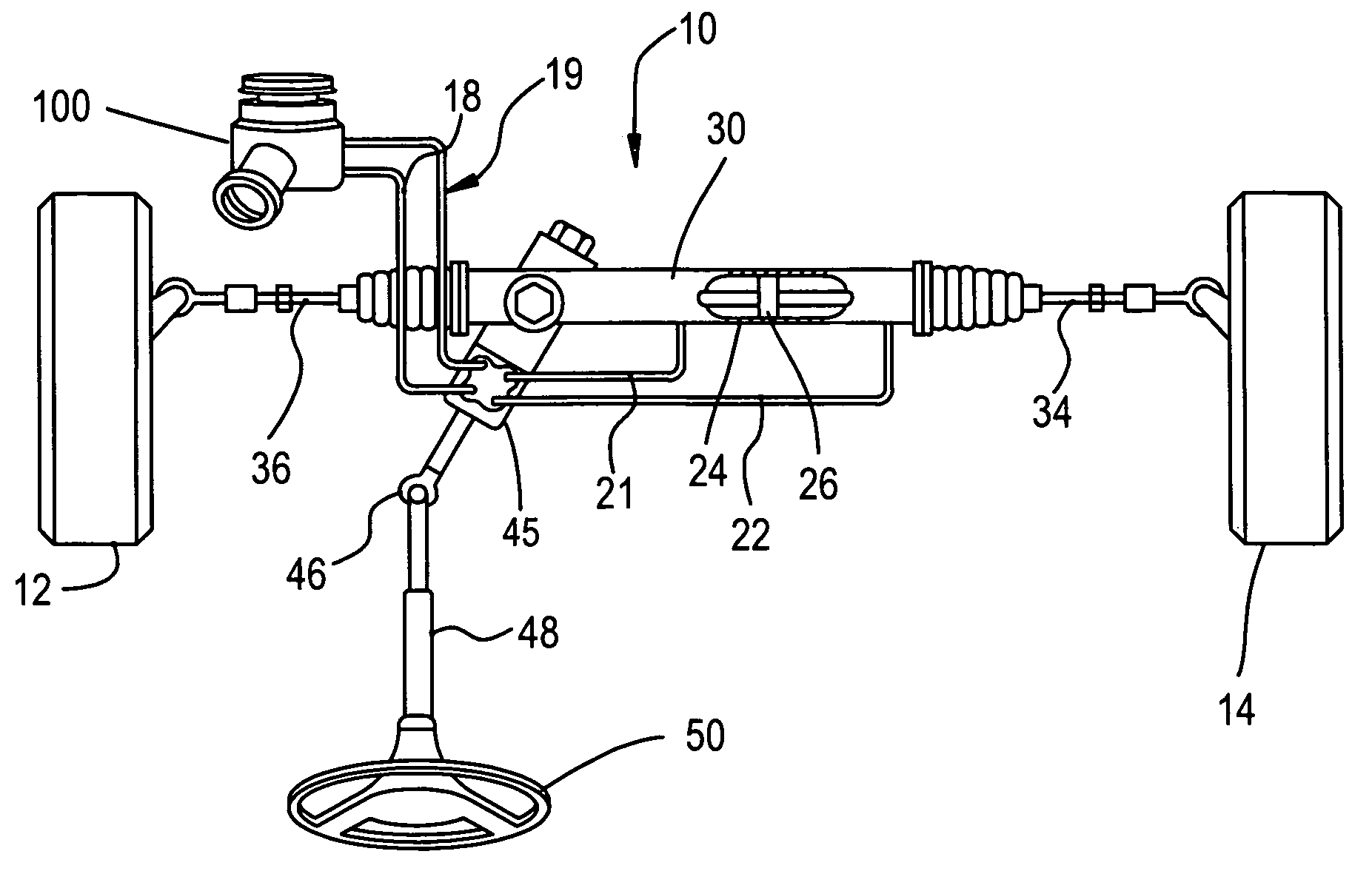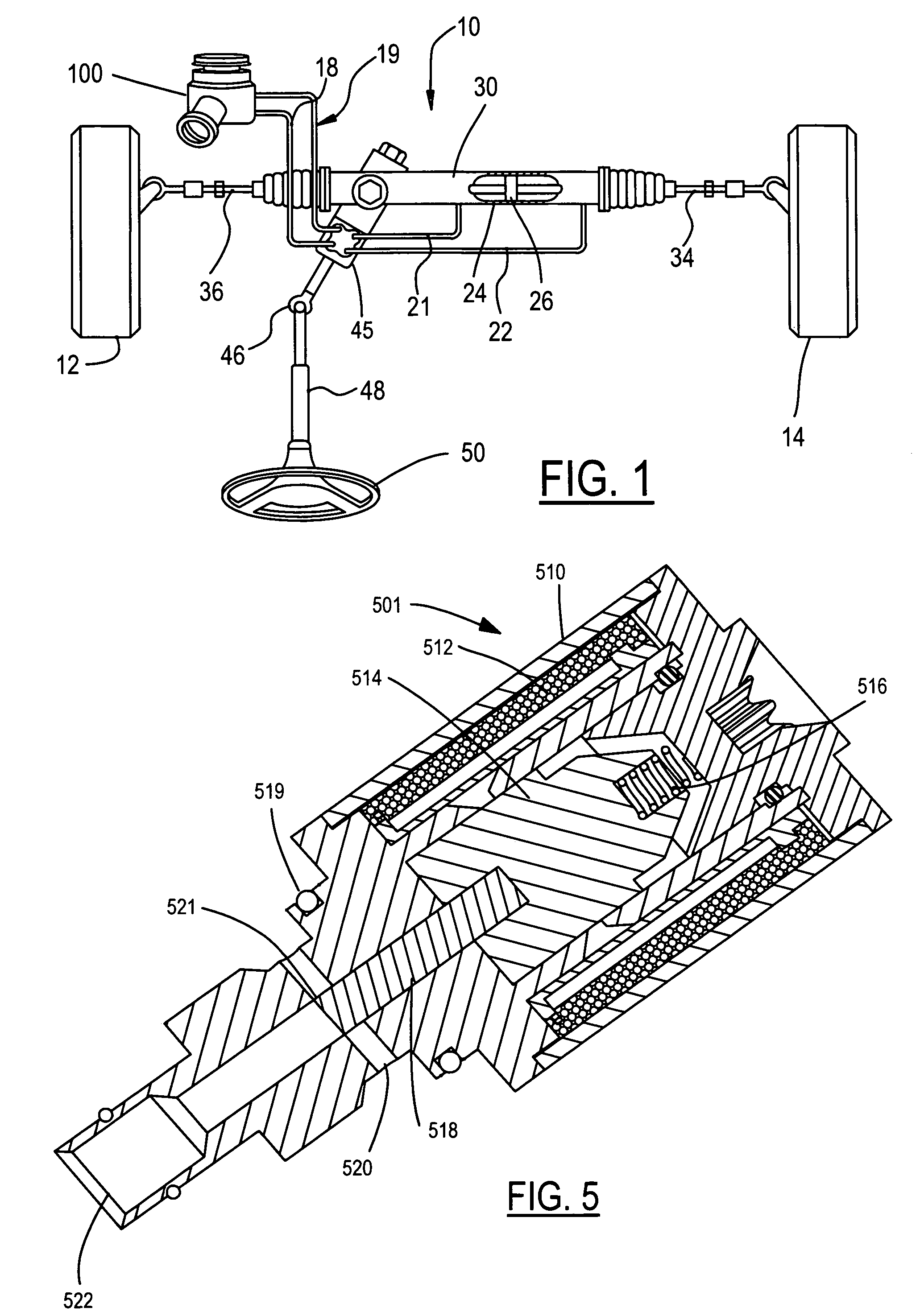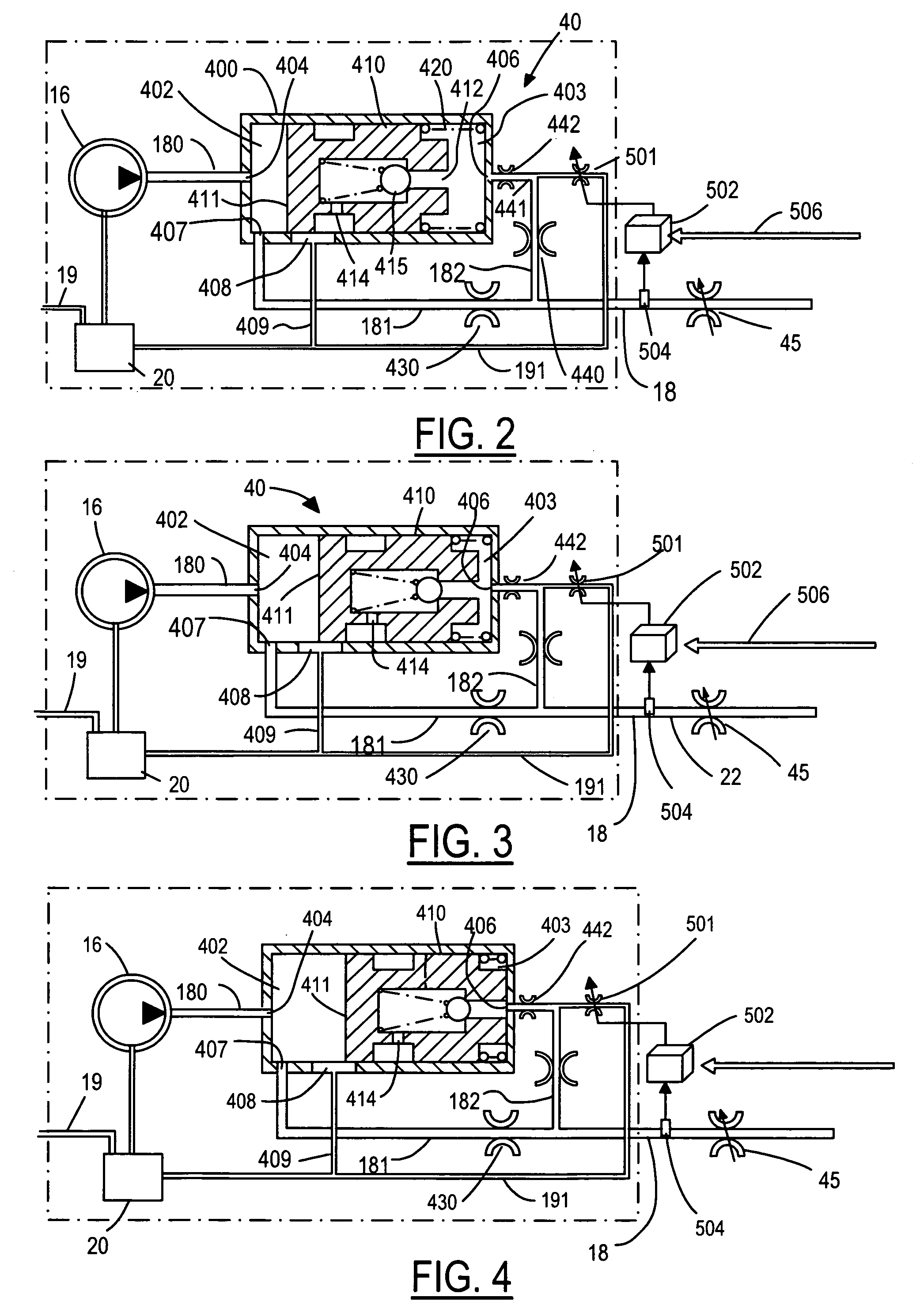Energy efficient power steering pump control system
a power steering pump and control system technology, applied in process control, servomotors, instruments, etc., can solve the problems of increasing the torque required to drive the pump, affecting the horsepower output and fuel efficiency of the vehicle, and increasing the pressure on the engine, so as to reduce the fuel consumption, improve the operating efficiency of the motorized vehicle, and minimize the effect of pressur
- Summary
- Abstract
- Description
- Claims
- Application Information
AI Technical Summary
Benefits of technology
Problems solved by technology
Method used
Image
Examples
Embodiment Construction
[0018]FIG. 1 illustrates a conventional power steering system 10, as is typically employed in an automotive vehicle. Steering system 10 includes a steering gear 24 and a hydraulic assist piston 26 in a housing 30. (Many possible steering mechanisms, such as, but not limited to, rack and pinion, re-circulating-ball, or worm-roller mechanisms may be used.) A steering wheel 50 is shown connected to a steering column 48 and, through a rotating universal joint 46, to steering assist valve 45. Tie rods 34 and 36 extend from steering gear 24 and provide the interconnection between the steering gear 24 and wheels 12 and 14, which are mounted to the vehicle chassis (not shown). An engine driven pump assembly and reservoir 100 provides power steering hydraulic fluid under pressure through an outlet line 18 to torque driven steering assist valve 45. A portion of the pumped fluid is supplied from steering assist valve 45 to the steering gear through output lines 21 and 22. This pressurized flui...
PUM
 Login to View More
Login to View More Abstract
Description
Claims
Application Information
 Login to View More
Login to View More - R&D Engineer
- R&D Manager
- IP Professional
- Industry Leading Data Capabilities
- Powerful AI technology
- Patent DNA Extraction
Browse by: Latest US Patents, China's latest patents, Technical Efficacy Thesaurus, Application Domain, Technology Topic, Popular Technical Reports.
© 2024 PatSnap. All rights reserved.Legal|Privacy policy|Modern Slavery Act Transparency Statement|Sitemap|About US| Contact US: help@patsnap.com










